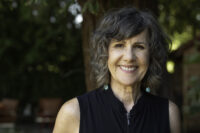A week after the Sonoma Valley Hospital Board of Directors’ packed post-bond meeting, people are still talking.
“I thought there’d be more from the audience,” said board member Bill Boerum, who called for another bond measure – this time for the whole amount – and for a commitment to securing the contentious Carinalli property. “We’ve got to nail that land down. Get a private group to buy it, somehow keep that land out of sale to another party,” he said. “My concern, and not felt by other board members, is that if you don’t have that land, then there’s no future for the hospital.” No representative from the neighbors’ group, who opposed a new building on the Carinalli property, was present.
Boerum also noted that many people complained that the “stealth” campaign, targeting supporters and urging them to get out and vote, didn’t work. “They’re wrong,” he said. “What happened is, we ran out of money. We missed it by 1,400 votes.” At the meeting he’d handed out a table, which he said described but did not explain the voter turn-out discrepancies between the successful Measure B and the failed Measure F. The table showed the number of registered voters had barely changed from 20,148, for Measure B, to 20,138 for Measure F. But the number of ballots fell off sharply, from 10,893 to 9,915. It was that, he said, that caused the disappointing 61.8 percent “yes” vote. The chart showed that Measure B had gotten 8,058 “yes” votes cast, to the 6,102 “yes” votes cast for Measure F. The problem,” he said, “was that we ran out of money.” The campaign for Measure B had cost $105,000 in contributions, but they’d had only $73,600 for Measure F. “Obviously,” he said, “these were two different kinds of turnout.”
At the meeting, discussion among the board members proceeded along two lines of thought. First, go back to the public for some amount of financing – either right away, or perhaps in November. And second, as Boerum advised: take whatever steps are necessary to get and keep the Carinalli land. While Boerum said he made a written appeal for this, the sentiment for it on the board was not very strong.
The public comments ranged from one supporter of Measure F, who said if the board made clear to the public that the objective is to upgrade and stabilize the facility, they could pass the bond, to another who said the board needed to talk less and listen more. Another thought that while the ER issue is understood, the hospital issue is not understood, and that a coalition should be brought back. Another said if another bond was put in, there needed to be a better public relations campaign to explain it properly. Another said it was a myth that the Chamber of Commerce was against the hospital – that business generally supports the hospital.
On Monday, over a cup of hospital cafeteria coffee, Bob Cannard described the problem this way: “The request was for two things. If they said we’d only use the money for upgrading the current hospital and none of the money would be used for planning or considering or building a new hospital, it would succeed. The people in this valley will vote for upgrading the hospital physically, for upgrading the programs in the hospital, the equipment in the hospital, the staff in the hospital – and that bond will pass.” But the people will not support a bond that includes money for planning for a new hospital and purchasing property for a new hospital. “I meet three times a week with a group of doctors who account for more than 80 percent of the patients in the hospital, and they all feel the same way. They’ve been systematically ignored for the last 10 years, and their advice has never been followed, and no bond will pass until it is.”
Dr. Robert Harf, who sat down with Cannard and a few other physicians, objected to the tactics and the timing. “We spent $85,000 on a bond, on an election that should not have taken place at this time. It should have been on a federal ballot, so we could have gotten 25,000 or 30,000. Then you might have gotten your two-thirds. But the people who turned out were the interested parties on both sides.” He was emphatic that people support the hospital. “People do support the hospital. People support this hospital! But this is a very bad time to be passing a bond,” he said. “I don’t have a problem with trying to secure land and trying to bolster the infrastructure with the hospital. I don’t have a problem with that. It’s a matter of timing.” There were other considerations as well. Dr. Bob Geiger said, “If you build a bigger hospital in an area where the patient base is not getting bigger, I’m confused. You need to figure out what’s actually happening, and respond to what’s actually happening.”
Hospital CFO Jim McSweeney, in a later interview, said that demographic studies had been done. “We assume one percent per year growth. But that’s not the biggest factor. The biggest factor is the aging of the population. The biggest single age group is between 55 and 65. People in that segment use health care services more frequently than those in other age groups. So I disagree with their assumption.”
Hospital spokesman Bob Rice said CEO Carl Gerlach will go over these and other details in the report he will present at the next board meeting on Wednesday, April 30, to be carried on SVTV27.
Community concerns still stir hospital issue
More from What's HappeningMore posts in What's Happening »




